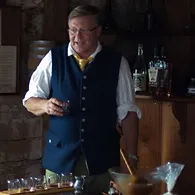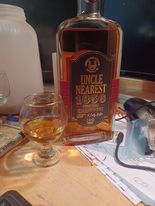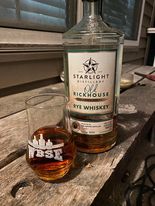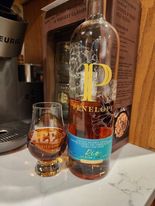When I accepted the role of Tavern Keeper at Dills Tavern (established 1742), I planned to learn 18th century concoctions and cocktails served in a small rural tavern at the beginning of America. We don’t have records of what they served in the tap room until the Eichelbergers bought the tavern, expanded the distillery, and began to keep detailed ledgers in 1800. At the beginning of the 19th century there was no question as to the favorite libation of farmers, drovers, merchants, militiamen, or townspeople who frequented the tavern: whiskey. The only question was how much? The most common serving was the gill (pronounced jill) which is an English measurement for 4 ounces. Surprisingly, whiskey was frequently purchased by the pint.
Let’s look at some ledger entries from 223 years ago:
August 24, 1800
‣ William Stuard paid 8 pence for ½ pint of whiskey
‣ Thomas Johnson bought 1 gill whiskey then ditto for 9 more for which he paid 1 shilling 1 pence, later he added another ½ gill
‣ Daniel Gilbert paid 4 pence for a gill of whiskey
‣ John Cassady purchased 4 separate half pints of whiskey at 8 pence each

Day after day the amount of whiskey consumed per person would shock all but the most ardent WBSE imbiber. Keep in mind, the average consumption of distilled spirits rose from of 2.8 gallons per person in 1795 to 5 gallons in 1820. This may have contributed to the rise of temperance organizations!
At that level of consumption, one would expect rowdiness. However, only occasionally did the ledger reflect someone charged for a broken glass or tumbler. Patrons were on their best behavior despite copious amounts of rye whiskey. The supply was good so whiskey was cheap. Prices for taverns were set by the courts. Every 3 months the Court of Quarter Sessions would publish the prices tavern-keepers could charge. In Jan of 1752 the price was 2 pence for “One Gill of Good Whiskey” in York, Pennsylvania. For comparison, a gill of West Indian rum was 5 pence while New England rum was 3. Not only was the whiskey cheap but you could barter to pay off your tab. Entries such as “cutting fence posts or an “afternoon of haying” were traded for libations. How many of us would trade an afternoon of carpentry for some of the good stuff?

Fortunately for me, alternative liquid options were also served. They were not as common as whiskey, but 33 separate entries were found in the ledgers. I’ve made them all. One of the more difficult drinks to re-create was Marthickleen. It turns out the entry was written phonetically, and the word the author intended was Metheglin which is an herbed Meade. There another one I could not find in historic drink literature. This was “Stewed Whiskey”. I’ve heard of Celtic broths with Islay whiskey added to the stew, but my version was an acceptable whiskey punch with stewed fruits. Though not as common as whiskey, Peach Brandy was another popular drink. It was the favorite of a traveling physician named George Wilson. The good doctor was a frequent visitor, had his own ledger page, and often purchased large quantities in a single evening as he did on September 26, 1800.
Whiskey Network members and their forefathers share a common trait: love of whiskey. While modern enthusiasts benefit from from a wide variety of whiskies of the world from which to choose our ancestors made up for the lack of choice with sheer volume! Cheers








